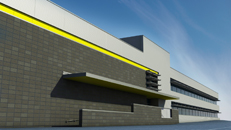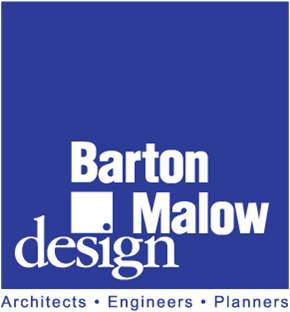
Detroit Integrated Transportation
Campus - Detroit, MI
Shane Goodman, Construction Management
| |
| Home |
| Biography |
| Building Stats |
| Thesis Abstract |
| Tech Assingments |
| Thesis Research |
| Thesis Proposal |
| Presentation |
| Final Report |
| Reflection |
| E-Studio |
"User Note: While great efforts have been taken to provide accurate and complete information on the pages of CPEP, please be aware that the information contained herewith is considered a work-in-progress for this thesis project. Modifications and changes related to the original building designs and construction methodologies for this senior thesis project are solely the interpretation of Shane Goodman. Changes and discrepancies in no way imply that the original design contained errors or was flawed. Differing assumptions, code references, requirements, and methodologies have been incorporated into this thesis project: therefore, investigation results may vary form the original design."
Special Thanks To:

| Building Statistics |
|
Location: Detroit, MI
Site: On Fort Street, Between 5th and 6th Street.
Building Occupant: Michigan Department of Transportation
Occupancy: Office
Size: 45,097 Total Square Feet
Total Levels: Two Stories
Project Team
Owner – State of Michigan Department of Management & Budget Office of Facilities, www.michigan.gov
Architect – Barton Malow Design, www.bartonmalow.com
Structural Engineer – Desai Nasr Consulting Engineers, www.desainasr.com
Mechanical Engineer – Sellinger Associates, www.sellingerinc.com
Electrical Engineer – Berbiglia Associates
General Contractor – Jenkins Construction, www.jenkinsconstruction.com
Dates of Construction: Begins October 15th, 2008 and Ends October 15th, 2009
Overall Construction Cost: $12,000,000
Project Delivery Method: Design-Bid-Build (Hard bid, GC contract)
Architecture
Zoning: Business
Major Codes:
International Building Code / 2003, International Fire Code / 2003, Michigan Plumbing Code / 2003, Michigan Mechanical Code / 2006, National Electric Code / 2005
The design of the DITC was based off the program requirements from the State of Michigan. Barton Malow Design knew the building site and requirements, and Algis Bublys, the design executive, created the DITC with both in mind. The building was designed to have an urban feel; therefore the building was pushed up against the street, and lengthened to run the whole block. This also reflects the design of the greyhound bus station in Detroit, a basis for the design of the DITC. The two story height was a product of the length and the program requirements.
The state of Michigan wanted the option of getting the building LEED certified, but due to the project budget, the building will not be a LEED certified building. However, some features such as the sunshades that run atop all the building’s windows, give the DITC the look of a green building.
The envelope of the DITC is made up of three different wall systems and a single roof system, all supported by the structural steel frame and concrete slab on deck. The roof system is a flat PVC roofing system comprised of a PVC membrane, rigid insulation, and metal deck. The three different wall systems are a glass curtain wall system, a masonry wall system, and a metal panel wall system. All the materials were picked with economics in mind, keeping the building low in cost, while maintaining the urban look and feel of the building. The exterior materials also reflect the spaces inside the building. The brick represents the more private operations areas in the building, while the metal panels and glass curtain wall represent the more open lobby and office areas. The metal panel curtain wall will be installed using a JLG and a small moment crane.
Construction
The Detroit Integrated Transportation Campus is being delivered using a Design-Bid-Build project delivery system. Jenkins Construction won the job by being the lowest bidding General Contractor. The State of Michigan holds a Guaranteed Maximum Price (GMP) contract with Jenkins Construction, in which Jenkins Construction agrees to deliver the DITC and all other project deliverables. Any added cost change orders that occur on the project are submitted with an estimate to the owner in order to increase the GMP of the project.
Jenkins Construction will hold Lump Sum contracts with each of the subcontractors that are selected for the project. A Lump Sum contract guarantees that the contractor will perform their required work for a set price, and any added cost change orders that occur will be submitted with an estimate in order to increase the value of the contract. The subcontractors will be selected using a standard bid process in which the lowest bidder will be selected to perform the required work. The contractors selected for the DITC have to be fully bonded with payment and performance bonds. In addition to being fully bonded, the contractors will be required to have workers compensation, employers’ liability, commercial general liability, and automotive liability.
The specific means and methods of construction can not be obtained since the contractor was just selected and not available for an interview. My proposed means and methods of construction can be found within the different system postings above and below.
Structural
The Detroit Integrated Transportation Campus structural steel frame is the main support for the 2-story 45,000 square foot building. The structural steel used is mostly W-Shapes: ASTM A992, Grade 50. Open web joists, which include K-series steel joists and Long-span steel joists, are also integrated into the roof support.
Bracing for the structural steel frame is provided by W-Shape rigid frames, and include no cross bracing members. There are six rigid frames running North and South that span the whole width of the building at grid lines 18, 14, 9, 7, 5, and 1. There are also six rigid frames running East and West that each span one to three bays.
The second floor is mostly comprised of 3 inches of regular weight concrete with welded wire fabric, on 3” 20 gauge galvanized composite steel deck. The second floor also includes acoustical floor deck enclosure above the open office spaces on the first floor. The roof of the DITC is comprised of 3 ½ inches of regular weight concrete with welded wire fabric, on 2” 20 Gauge Epicore steel roof deck.
Because building construction has not yet begun and the contractor was just selected information on the type of crane being used is not available. However, due to the length of the building it would be most efficient to use a crawler crane. The heaviest lift is 3496lb at a maximum radius of 80 feet, and a 50 ton crane with an 86’ boom can safely lift 3,700lb. If it is kept on site, this crane can also safely lift the heaviest air handling unit, which is 7,600lb and within a 40’ radius.
Cast in Place Concrete is utilized on the DITC for footings, piers, and grade beams. The Concrete foundations require a minimum allowable bearing capacity of 3,000 psi. There is no exposed concrete for the DITC, therefore the concrete can be rough-formed, which would allow for plywood, lumber, and metal formwork.
Mechanical
The Detroit Integrated Transportation Campus is regulated by four central rooftop air handling units that are fed from city utilities. Two units weigh 3,500 lb and supply 6,505 CFM to service the operations zone and the other two units weigh 7600 lb and supply 16,430 CFM to service the non-operations zone. The cooling for each unit is controlled by a supply-air refrigerant coil and an outdoor-air refrigerant coil, which each circulate R-407C Refrigerant. The heating for each unit is controlled by factory assembled gas furnaces, which are fueled by natural gas supplied from city utilities.
Variable air volume (VAV) boxes with reheat are used to control the temperature throughout the different rooms in the building. Theses VAV boxes allow for a constant supply of air from the air handling units, while varying the amount of air flow for each room to control specific room temperatures. The boxes have hot water reheat to recycle return air, and save the energy the Air Handling units would have to expend to heat 100% outdoor air. Four cabinet unit heaters are used to heat the stairwells and vestibules. These units are supplied with hot water from the boilers.
Hot water is supplied throughout the building from two 44 GPM boilers which heat the water with natural gas supplied from city utilities. These boilers are located in the boiler room, which is on the second floor in the central North area of the building. Electric domestic water heaters help to control water temperature within the break rooms and toilet rooms. Chilled water is supplied to the building from city utilities.
Electrical
The Detroit Integrated Transportation Campus is fed by a 1000 KVA, 3-Φ 480Y/277 V Primary Feeder with power supplied by DTE Energy. The 15 KV Primary Switchgear is located outside the building, and the Electrical Room, which houses the electrical distribution equipment, is located on the second floor in the North East corner of the building. The emergency backup is provided by an outdoor 3-Φ 480/277 V Diesel Generator. To ensure constant power to the buildings computer system, an Uninterrupted Power System is located in the buildings Server Room.
Lighting
The Detroit Integrated Transportation Campus site and building exterior are lit with Metal Halide Lamps. The back parking lot and surrounding pedestrian paths are illuminated by exterior light poles placed throughout the buildings site. The south entry ramp is illuminated with metal halide lamps that are recessed in the building’s exterior façade.
Inside, most of the DITC’s office and operations spaces are lit with compact fluorescent lamps recessed in box fixtures in these spaces hung ceilings. The open office area is also illuminated with compact fluorescent lamps housed in low profile continuous row fixtures which are hung at 9 feet above the finished floor. These fixtures are hung from the ceiling above with air craft cable mounting.
The hallways and common spaces in the DITC are lit with metal halide lamps in round, wall wash luminaries that are recessed in the ceiling.
Fire Protection
Fire suppression for the DITC was designed to be an automatic wet pipe sprinkler system that can provide a flow of 1800 GPM with a density of .2 GPM per square foot. Both floors of the DITC have a full building fire alarm system, with visual and audible alarms placed throughout the building. These alarms are all connected to four fire alarm panels, with two located on each floor.
Transportation
The Detroit Integrated Transportation Campus has one hydraulic elevator located in the center on the north side of the building, which services both floors. The elevator is an under-the-car single cylinder hydraulic elevator with a rated load of 3,500 pounds, and the car’s interior is 80 inches wide, 51 inches deep, and 94 inches tall. The elevator is incased in a shaft wall and supported by tube steel that runs the whole height of the shaft. The elevator shaft is wrapped by the central stair case of the building.
General Description:
The Capstone Project Electronic Portfolio (CPEP) is a web‐based project and information center. It contains material produced for a year‐long Senior Thesis class. Its purpose, in addition to providing central storage of individual assignments, is to foster communication and collaboration between student, faculty consultant, course instructors, and industry consultants. This website is dedicated to the research and analysis conducted via guidelines provided by the Department of Architectural Engineering. For an explanation of this capstone design course and its requirements click here.